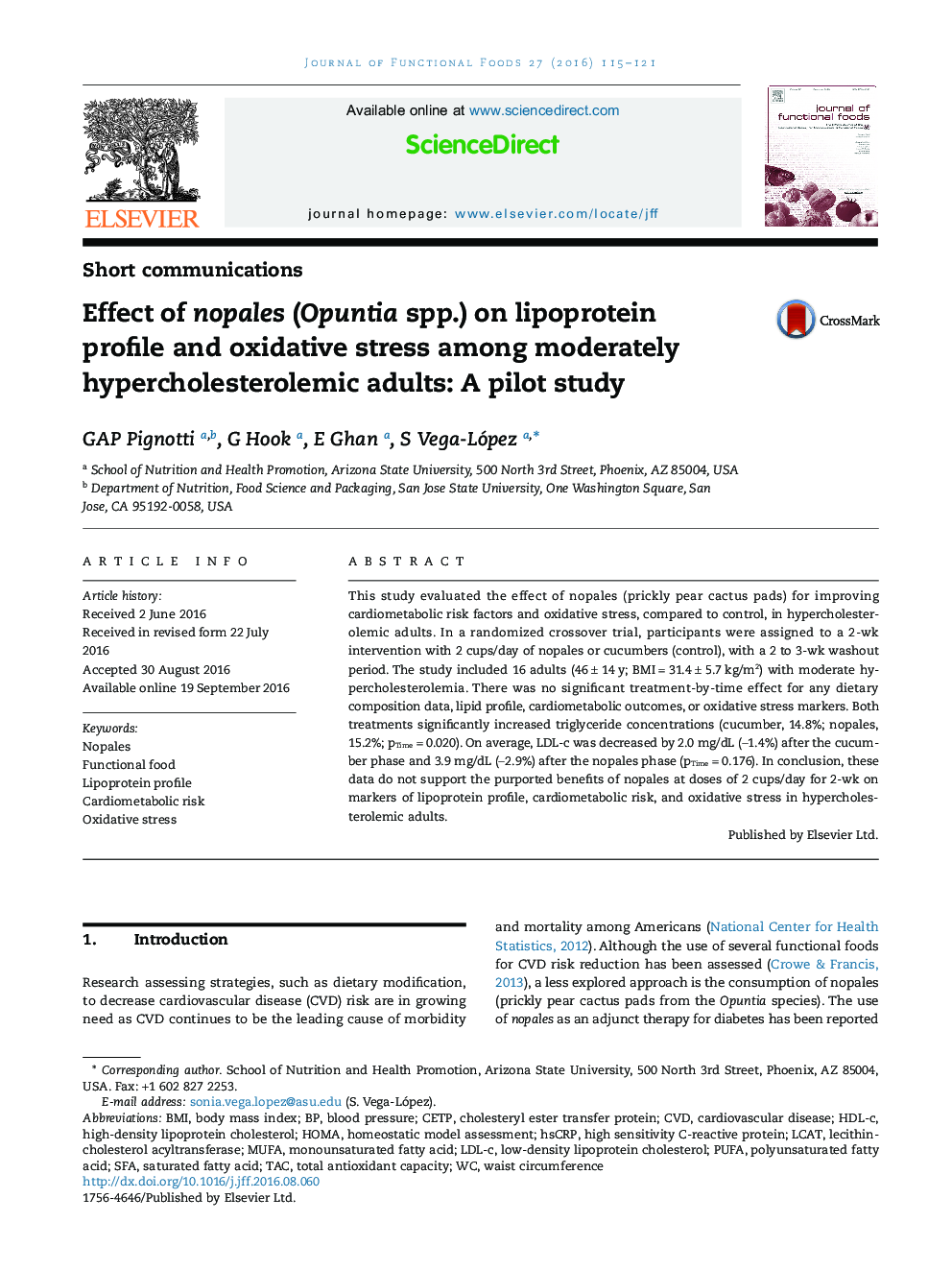| کد مقاله | کد نشریه | سال انتشار | مقاله انگلیسی | نسخه تمام متن |
|---|---|---|---|---|
| 5137493 | 1494539 | 2016 | 7 صفحه PDF | دانلود رایگان |

- Findings do not support the purported cardioprotective benefits of nopales.
- Nopales did not improve lipoproteins in moderately hypercholesterolemic adults.
- Nopales and cucumber raised triacylglycerols and cholesterol in small HDL particles.
- Consuming nopales did not improve oxidative stress markers.
This study evaluated the effect of nopales (prickly pear cactus pads) for improving cardiometabolic risk factors and oxidative stress, compared to control, in hypercholesterolemic adults. In a randomized crossover trial, participants were assigned to a 2-wk intervention with 2 cups/day of nopales or cucumbers (control), with a 2 to 3-wk washout period. The study included 16 adults (46â±â14ây; BMIâ=â31.4â±â5.7âkg/m2) with moderate hypercholesterolemia. There was no significant treatment-by-time effect for any dietary composition data, lipid profile, cardiometabolic outcomes, or oxidative stress markers. Both treatments significantly increased triglyceride concentrations (cucumber, 14.8%; nopales, 15.2%; pTimeâ=â0.020). On average, LDL-c was decreased by 2.0âmg/dL (â1.4%) after the cucumber phase and 3.9âmg/dL (â2.9%) after the nopales phase (pTimeâ=â0.176). In conclusion, these data do not support the purported benefits of nopales at doses of 2 cups/day for 2-wk on markers of lipoprotein profile, cardiometabolic risk, and oxidative stress in hypercholesterolemic adults.
Journal: Journal of Functional Foods - Volume 27, December 2016, Pages 115-121